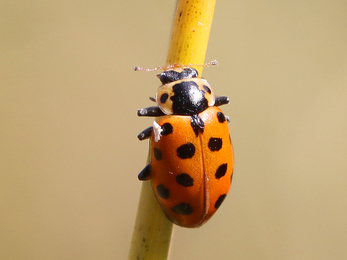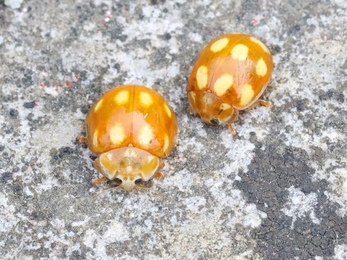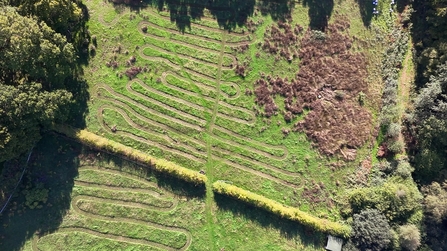Among the discoveries was the 13-spot ladybird (Hippodamia 13-punctata), a wetland species that has not been recorded in the New Forest for nearly 20 years. Its rediscovery is particularly significant as it is rare in the UK, and it was found in damp meadow habitats enhanced through the Trust’s work in partnership with the Species Survival Fund (SSF).
The Adonis’ ladybird (Hippodamia variegata) was also found. This species is nationally scarce, and typically associated with dry, sandy grasslands. It thrives in areas with abundant aphids - their preferred prey - which are supported by the wildflower meadows which the Trust is creating.
The third species, the Little Arboreal ladybird (Calvia decemguttata), is a recent colonist to the UK, likely arriving from France due to warming temperatures. While not historically rare, it is new to Britain and its presence in the New Forest highlights the area as an important habitat corridor for species expanding their range.
The Trust’s work plays a central role in these discoveries: meadows are being established by adding wildflower seed (which is appropriate to local soils and conditions) to previously botanically poor fields, providing vital pollen and nectar sources and improving habitat connectivity.
By the end of 2025, 22,400 wildflower plug plants will have been planted, providing additional pollen and nectar sources. This network of ‘stepping stone’ habitats helps declining insects, including ladybirds, to expand their range.
The Trust is also planting and enhancing hedgerows around these meadows, which further connect habitats so that wildlife can move safely between sites.
Tracé Cooper-Williams, Senior Nature Recovery Manager at Hampshire & Isle of Wight Wildlife Trust said: “Seeing these ladybirds return is incredibly moving. Ladybirds are key indicators of ecological change so their presence in the New Forest is directly linked to habitat quality.
“Every meadow we restore, every hedge we plant, every plug of wildflower we tuck into the soil, makes a real difference and is a chance to help wildlife flourish. To witness species like the 13-spot or the Adonis’ ladybird returning after years away, or a brand-new arrival like the Little Arboreal, really fills me with hope for the future.
“We also know that climate change is influencing the wildlife we see here. Warmer conditions are encouraging some species, like the Little Arboreal ladybird, to move northwards, and that makes it even more important to create connected, high-quality habitats where they can find food and shelter.”



